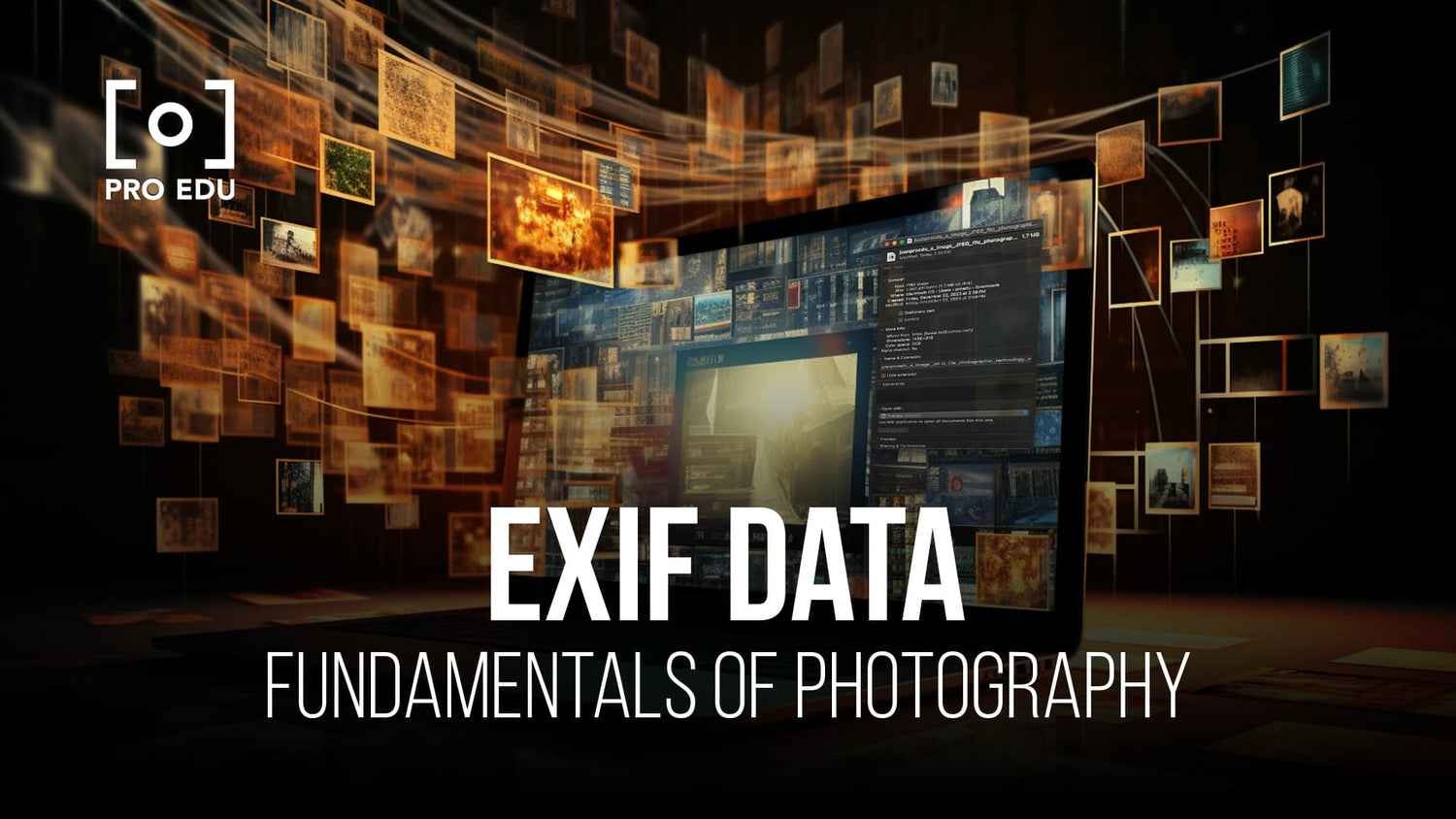EXIF Data Demystified: A Photographer's Guide to Understanding and Utilizing Metadata
EXIF data, or Exchangeable Image File format, is a treasure trove of information for photographers. As a hidden advantage to digital photography, EXIF data records vital metadata about every photo you take, from camera settings to equipment information. These details can help photographers learn from their own work and the works of others, making it an invaluable tool for growth and improvement.
Understanding EXIF data involves delving into the wealth of information it contains, such as aperture, shutter speed, ISO, metering mode, focal length, and much more. Your camera also records metadata, including equipment information, serial numbers, and copyright details. By familiarizing yourself with this data, you can gain insights into your photography techniques and analyze the creative choices made by skilled photographers.
To view and edit EXIF data, photographers can use dedicated software or access it through photo-editing tools. With the right tools, you can find critical details about your images, alter your metadata, and learn from other's works by examining their EXIF data.
Key Takeaways
- EXIF data provides photographers with valuable metadata about their images.
- Understanding this information helps improve photography techniques and analyze creative choices.
- Viewing and editing EXIF data requires the use of dedicated software or photo-editing tools.
Understanding EXIF Data
Decoding the Metadata
EXIF data, or Exchangeable Image File Format, is a type of metadata generated when we take a photograph with a digital camera. It provides invaluable information about our camera settings and other aspects of our photography. Let's explore the key elements of EXIF data and how they help us understand the photo-taking process better.
Camera Model identifies the specific make and model of our camera, which allows us to understand the available features and limitations of the equipment we used. It can be helpful when comparing photos taken with different cameras. More information about camera models can be found at Expert Photography.
Aperture, shutter speed, and ISO are the three most important parameters that determine the exposure settings of our photos. Aperture is the size of the opening in the lens which controls the amount of light that enters the camera. Shutter Speed refers to how long the camera's sensor is exposed to light, and ISO is a measure of the camera sensor's sensitivity to light.
Focal Length specifies the distance between the camera sensor and the optical center of the lens, affecting the magnification of the subject and the depth of field. In addition, lens information can indicate special characteristics of the lens used, such as macro or telephoto capabilities. Knowing the focal length and lens used can help us understand the creative choices made during the photo-taking process.
White Balance settings indicate how the colors in the image are balanced to account for different lighting conditions. By understanding the white balance used in a photo, we can better judge the accuracy of the colors rendered in the final image.
Other EXIF data elements include camera-specific information such as serial numbers, copyright information, and additional camera settings. In summary, by examining the EXIF data found in our photos, we gain valuable insights into the creative and technical choices made during the photography process. This empowers us to learn from our own and others' work and continuously improve our skills as photographers. Learn more about EXIF data at Photography Life.
Viewing and Editing EXIF Data
Software Solutions
There are several software options available for viewing and editing EXIF data. One popular choice is Adobe Photoshop, which allows users to access and edit EXIF data with ease. In addition, other Adobe products like Adobe Lightroom and Adobe Bridge also include functionality for working with EXIF data.
For those seeking free or open-source alternatives, GIMP is a powerful image editing software that can also handle EXIF data. Similarly, dedicated EXIF applications like IrfanView and XnView offer effective solutions for managing EXIF information.
Operating System Capabilities
Operating systems such as Windows, Mac, and Linux also provide built-in capabilities for viewing EXIF data. In Windows, you can easily access EXIF data by right-clicking the image file and selecting Properties > Details. For Mac OS users, selecting the image and pressing Cmd + I to "Get Info" displays the available EXIF information under the "More Info" tab, as mentioned in this How to Geek article.
Linux users can utilize the command-line tool ExifTool, which is a versatile option for managing EXIF data across various platforms. By following the ExifTool's documentation, users can view, edit, and remove EXIF data from their image files effectively.
Overall, the choice of software or operating system capabilities will depend on the photographer's preferences and needs. By exploring these different solutions, any photographer can take full advantage of the valuable insights EXIF data provides.
Advanced EXIF Operations
Removal and Privacy
One of the key concerns we may have when sharing our photos online is privacy. To protect it, we can remove EXIF data that may include sensitive information. Removing EXIF data can be done by using software such as Adobe Photoshop or other specialized tools.
Sensitive data might include date, time, timezone, and even GPS location data. We want to ensure that we only share what we intentionally want others to see, and not any unexpected extra metadata.
Geotagging and GPS Information
Many photographers find value in knowing the exact geolocation of their shots. GPS-enabled cameras automatically embed GPS coordinates within the EXIF data, allowing us to pinpoint the shooting location on a map.
Additionally, we can even manually geotag our images if our camera doesn't have GPS capability. We can do this by using photo editing software or dedicated applications designed for this purpose. Geotagging not only helps to organize our images, but also provides valuable metadata if we decide to share our images with other photographers or online platforms.
Remember, privacy is crucial, and we should always be mindful of the information contained in our EXIF data. By carefully editing and managing the metadata, we can protect our privacy while still taking full advantage of the benefits that EXIF data brings to our photography.
Additional Metadata Parameters
Copyright and Watermarking
In addition to standard EXIF information such as camera model, lens, and manufacturer, photographers can protect their work by embedding copyright and watermarking details within their images. This helps to maintain control over image usage and ensures proper attribution. This information can be added through XMP or IPTC metadata standards.
Watermarking, on the other hand, is the act of adding a visual mark (e.g., logo or text) onto the image itself. This can discourage unauthorized re-use and provide further proof of ownership. Watermarks can be applied using various photo editing software and adjusted for opacity and size to maintain the image's visual appeal.
File Formats and Sizes
Regarding file formats, there are several popular formats to choose from, and each has its unique properties. These formats include JPEG, PNG, GIF, TIFF, and RAW. JPEG is the most commonly used format due to its balance of good image quality and reasonable file size. This format is ideal for online sharing and storage.
PNG files, on the other hand, support lossless compression and transparency, making them suitable for images requiring high-quality detail preservation and for graphics with transparent areas. GIFs are mainly used for animations and low-resolution images due to their limited color range.
TIFF and RAW formats are often preferred by professional photographers for their lossless compression and ability to store a high amount of image data. These formats provide greater flexibility when it comes to post-processing. However, they also result in larger file sizes, which may not be suitable for casual use or sharing over the internet. The choice of format depends on the desired balance between image quality, storage, and ease of sharing.
Lastly, metadata can also include details about an image's resolution and dimensions. Higher resolutions offer more detailed images but can lead to increased file sizes. Selecting the appropriate resolution and dimensions can optimize a photograph for its intended application, be it print or digital display.
EXIF Data in Digital Photography
When taking digital photos with digital cameras or smartphones, something called EXIF data is automatically created. This data includes various technical aspects related to the capture and processing of the image, such as camera settings and device specifications. In this section, we'll discuss the role of EXIF data in digital photography and offer some photography tips and tricks.
Photography Tips and Tricks
Understanding and leveraging EXIF data can greatly enhance our photography skills, both during the shooting process and in post-processing using software like Photoshop. Let's explore a few ways we can use EXIF data to improve our photography.
-
Understanding Camera Settings: By studying the EXIF data of our photos, we can learn about the camera settings that were used, such as aperture, shutter speed, and ISO. This knowledge helps us better understand the impact of these settings on our images, allowing us to make more informed decisions when adjusting them.
-
Identifying Patterns: As we review the EXIF data from a series of photos, we may notice patterns in the settings we frequently use. This information can assist us in identifying areas in which we might need to expand our skills or experiment with new techniques.
-
Organizing Our Photos: Most photo management software and platforms can read and utilize EXIF data. We can use this metadata to help organize our images and filter them by various attributes, such as the date they were taken, camera make and model, or focal length.
-
Enhancing Post-processing: When using tools like Photoshop for post-processing, knowing the original settings can be crucial in achieving our desired results. EXIF data provides us with the necessary information to make informed adjustments during the editing process.
By understanding and utilizing EXIF data in our digital photography, we can gain valuable insights that can help enhance our skills, streamline our workflow, and improve the overall quality of our images.
Frequently Asked Questions
How do I view EXIF data for my photos?
To view EXIF data for your photos, you can use photo editing software like Adobe Photoshop or Lightroom. For Windows users, simply right-click on the image file, choose "Properties," and select the "Details" tab1. Mac OS X users can find EXIF data by right-clicking on the image file, selecting "Get Info," and checking the "More Info" section2.
Can EXIF data be edited or removed?
Yes, EXIF data can be edited or removed using various tools and software. For instance, you can use a specialized tool like ExifTool, which allows you to edit or delete EXIF data from JPEG files3. In Adobe Photoshop, you can access and edit EXIF data through the File Info menu4.
What is the importance of EXIF dpi?
EXIF dpi (dots per inch) represents the resolution of an image, indicating the number of dots that fit into a one-inch line. This information may impact print quality and size; higher dpi values typically result in better image quality. Although EXIF dpi is not crucial for digital display, it serves as valuable information for photographers wanting to print their images.
How does EXIF MakerNote affect my images?
EXIF MakerNote is a proprietary metadata section that camera manufacturers use to store extra information about an image5. This data may include camera settings, lens information, or unique attributes specific to the manufacturer. MakerNote information is usually not essential for general photography purposes, but it can be helpful for photographers seeking in-depth details about their images.
Is there a difference between EXIF and JPEG metadata?
Yes, there is a difference between EXIF and JPEG metadata. While EXIF data is a specific type of metadata containing detailed information about an image (e.g., camera model, lens, date and time), JPEG metadata is a broader term that encompasses all types of metadata found in JPEG files, which may include EXIF data, IPTC data (creator and copyright information), and XMP data (customizable metadata used by Adobe products)6.
What role does EXIF play in Exif Print?
Exif Print is a standard that enables digital cameras and printers to accurately reproduce colors and tones in printed images. It works by embedding specific EXIF data, such as camera settings and scene information, into an image file. This data helps compatible printers adjust their settings to match the photographer's intent and produce higher-quality prints7.
Footnotes
-
https://www.howtogeek.com/68085/how-to-use-exif-data-to-learn-from-master-photographers/ ↩
-
https://www.howtogeek.com/68085/how-to-use-exif-data-to-learn-from-master-photographers/ ↩
-
https://essential-photoshop-elements.com/unlocking-the-power-of-exif-data-in-photoshop-a-comprehensive-guide/ ↩
-
https://www.digitalcameraworld.com/features/what-is-exif-data-and-is-it-useful ↩
-
https://essential-photoshop-elements.com/unlocking-the-power-of-exif-data-in-photoshop-a-comprehensive-guide/ ↩
-
https://www.digitalcameraworld.com/features/what-is-exif-data-and-is-it-useful ↩













